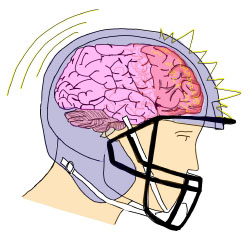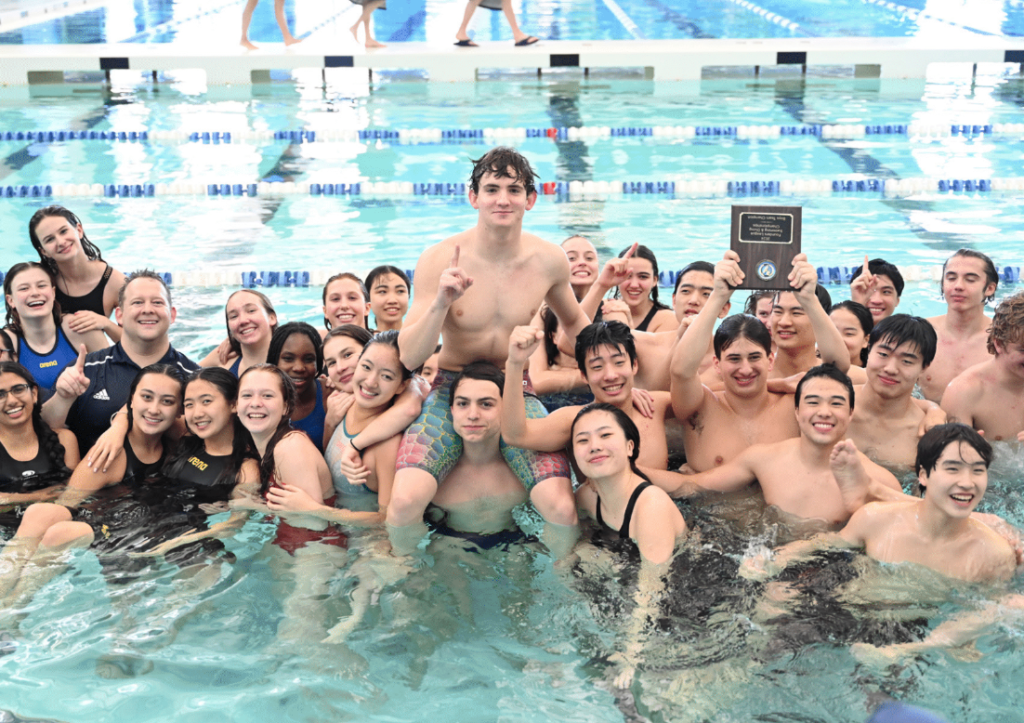Concussion prevention has been receiving nationwide attention lately, as brain injuries are becoming more commonplace in a variety of sports. Already, there have been seventeen reported concussions on Choate’s campus this fall. Around this time in 2014, there had only been eleven. In 2015, this number fell to seven. As a result of this year’s increase in brain injuries, concussions have become a critical talking point within the school community.
In order to discuss concussions at Choate, one must first understand what a concussion is. Dr. Christopher Diamond, Director of Health Services, said the cause of a concussion is a sudden movement of the brain, then an abrupt stop. He elaborated, “The brain moves within the skull, so if the skull stops, the brain takes another moment to stop and there is this reverberation, or impact, upon the brain.” So far this year, concussions have been reported on the water polo, football, and soccer teams. Water polo has suffered more concussions then the others, with the most common cause being freak accidents. The way in which each water polo player was concussed is uncommon and, in at least three of the cases, the player was not anticipating contact. Examples include a flying elbow to the head and the ball unexpectedly rebounding.
First-year teacher and new Boys Varsity Water Polo Head Coach, Ms. Brooke Rea, said, “I err on the side of caution. As soon as a player gets hit in the head, if they have any concussion symptom for more than a couple of minutes, I encourage them to go to the Health Center.” Varsity player Oliver Chessen ’19, who suffered a concussion earlier this term, said, “Coach Rea was very understanding. She appreciates that personal health comes before water polo, and told me to take as much time off as I needed.”
Dr. Diamond consistently emphasized that concussions need to be taken seriously. He said, “Everyone needs to err on the side of caution because if you don’t, the recovery can be incredibly long.”
Ongoing research into head injuries means that the world of sports must constantly adapt to protect players as well as possible. In particular, the high-risk sport of football has had to adopt new safety measures, especially after work done by Dr. Bennett Omalu and the National Football League revealed a connection between in-season brain trauma and later-in-life chronic traumatic encephalopathy, a progressive degenerative disease similar to dementia. As new information continues to emerge, high schools are facing increased pressure to protect their student athletes.
One might expect half of a school’s concussed students to be football players. Yet at Choate, their risk is at or below that
of other athletes. Dr. Diamond said, “We are in the process of learning how to teach sports differently, and Choate’s football coaches are ahead of the curve. I think they teach the game better than anyone in high school football, and that’s one of the reasons we don’t see concussions as often on our teams.” He continued, “Good coaching in a high-risk sport like football can bring the risk of head injury down to that of a lower-risk sport.”
The Health Center currently has a respectable system in place for handling concussions. Protocol at Choate is essentially a slow build-up back to full strength. After an accident, students spend the first few days sleeping in a dark room. After that period, they begin to exercise their brain more by reading easy literature. Next, the patient starts listening to soft music and having conversations. If a problem arises, they regress to the previous step.
Despite this meticulous protocol, Dr. Diamond and other Health Center employees are constantly examining the process to make sure it is as safe and effective as possible. Dr. Diamond said, “The problem is that even with our very good protocol, the student may not be back to health for up to three weeks. That creates all sorts of problems at a school like Choate.”
Missing school is certainly problematic for Choate students, so the Health Center works hard to make this disruption as small as possible. Dr. Diamond said, “The main thing is to monitor what is being missed: to identify which classes they must focus on upon their return, what homework needs to be done versus what can be forgiven, and then what they should and should not be assessed on.”
Despite the Health Center’s best efforts, missing school will inevitably affect students. Rohin Shivdasani ’18 said, based on his own experience, “Every night you’re doing two nights of homework to catch up. At Choate, one night’s worth of homework is already a lot.” This sentiment was echoed by Wesley Fang ’19, who got a concussion earlier this year. Chanin Kitjatanapan ’17, who is currently undergoing treatment for a concussion, explained that his situation is especially unfortunate because the concussion caused him to miss out on a period of time that is necessary to complete one’s early applications for college.
One thing that the Health Center is currently changing is the way that baseline ImPACT tests are done. The baseline test is a computerized assessment of one’s verbal memory, visual memory, reaction time, and motor speed. A student first takes this test when his or her brain is uninjured, so that a suspected concussion can later be identified when he or she retakes the test and receives a different score. Dr. Diamond said, “This year we began with the varsity and high-risk sport athletes getting ImPACTs.” He plans to start conducting baselines with new students soon.
Students have identified other aspects of concussion protocol that they believe could be improved. Shivdasani mentioned, “When you have a concussion and you’re not going to classes, you can only rest at the Health Center, which is very inconvenient.” He reported that constantly walking between the Health Center and one’s dorm is not only time-consuming, but also mentally straining due to the prolonged exposure to bright sunlight. Kitjatanapan added that one aspect which could be adjusted is “just keeping the patient informed. I wasn’t really educated about the stages of the concussion, but my coaches were.” Although certain aspects of the process may not be optimal for students, all of the subjects interviewed believed that the Health Center did an excellent job handling their case.




